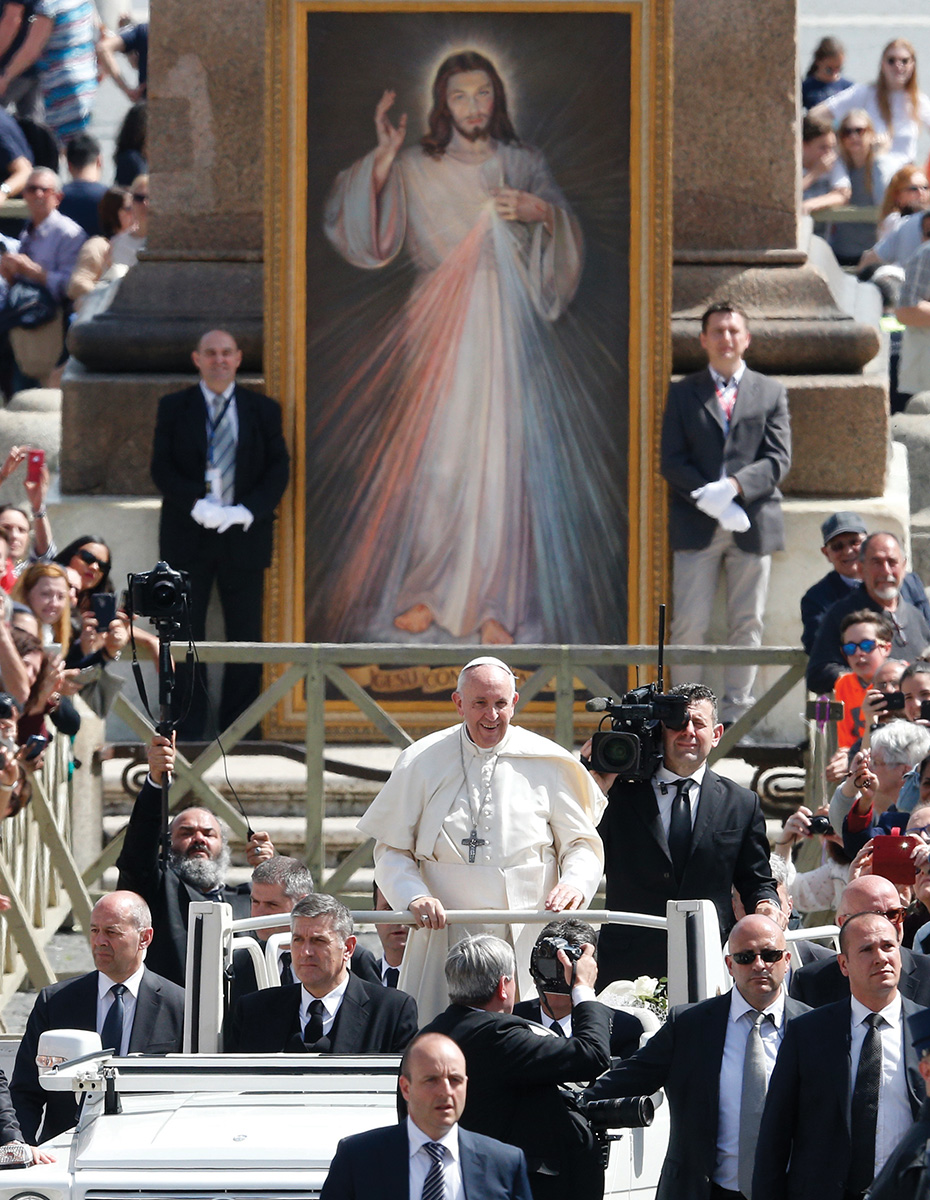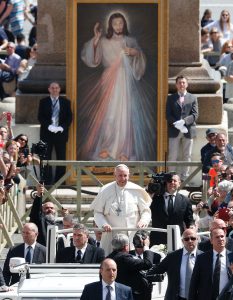

Every year on the first Sunday after Easter we celebrate Divine Mercy Sunday. This year’s feast will be April 19. If you’ve noticed this Sunday in the liturgical year but never paid much attention to it, this is a good time to take another look at this beautiful feast in the life of the Church.
The Feast of Divine Mercy is based on the private revelations of Saint Maria Faustina Kowalska who had visitations from Jesus for several years during the 1930s. In those revelations, Jesus told Saint Faustina to do something very specific for him.
“My daughter, tell the whole world about My inconceivable mercy. I desire that the Feast of Mercy be a refuge and shelter for all souls, and especially for poor sinners. On that day the very depths of My tender mercy are open. I pour out a whole ocean of graces upon those souls who approach the fount of My mercy.”
The devotion to the Divine Mercy grew around the world after her revelations and was made an official feast day by Pope Saint John Paul II in 2000 when he canonized Saint Faustina.
One of the promises made by Jesus during the revelations to Saint Faustina was a special grace that is the equivalent of a complete renewal of baptismal grace for the soul. It is a complete forgiveness of sins and punishment and is separate from the plenary indulgence offered by the Church. As with many spiritualities popular with the faithful, the Church does not require belief in it as part of its doctrine but leaves it to the faithful as an option because it does not violate Catholic doctrine.
The special graces may be obtained by going to confession, receiving Holy Communion on Divine Mercy Sunday and trusting in The Divine Mercy. The graces can only be received for oneself. For more details on these graces and how to receive them, visit www.thedivinemercy.org.
The Church offers a plenary or partial indulgence if several conditions are met as well. They include prayer for the pope’s intentions, confession, Holy Communion on Divine Mercy Sunday, and these additional actions:
- In a church or chapel, in a spirit that is completely detached from affection for a sin, even a venial sin, take part in the Divine Mercy Chaplet.
- Or, in the presence of the Blessed Sacrament, pray the Our Father and the Creed, adding a devout prayer to the merciful Lord Jesus.
If you’re not familiar with the Divine Mercy Chaplet, it’s an easy chaplet that uses a rosary when praying. The chaplet is said beginning on Good Friday for nine days at 3 p.m. each day. A specific intention is prayed for each day:
- Day 1–All mankind, especially sinners
- Day 2–The souls of priests and religious
- Day 3–All devout and faithful souls
- Day 4–Those who do not believe in Jesus and those who do not know Him
- Day 5–The souls of separated brethren
- Day 6–The meek and humble souls and the souls of children
- Day 7–The souls who especially venerate and glorify Jesus’ mercy
- Day 8–The souls who are detained in purgatory
- Day 9–The souls who have become lukewarm
This is a beautiful devotion that makes the Easter season take on new meaning and refreshes the soul. To learn how to pray the Divine Mercy Chaplet and for more information about the Divine Mercy devotion, visit www.thedivinemercy.org.
Divine Mercy Chaplet Closing Prayer
Eternal God, in whom mercy is endless and the treasury of compassion—inexhaustible, look kindly upon us and increase Your mercy in us, that in difficult moments we might not despair nor become despondent, but with great confidence submit ourselves to Your holy will, which is Love and Mercy itself.


